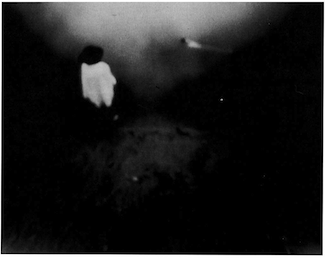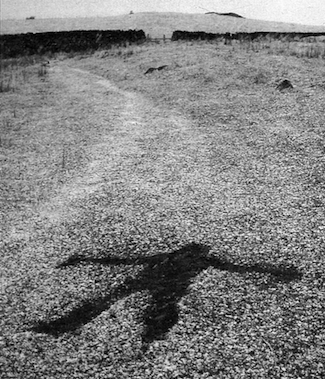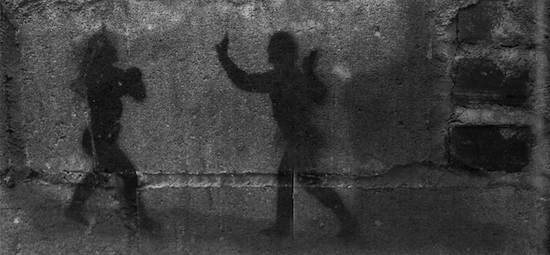In the wake of the hospice and “conscious dying” movement, caring for the dying has been identified as an inspiring stimulus to spiritual development—more akin to a calling than a job. Spiritual methodologies, particularly Buddhist ones, have informed these efforts to bring compassionate care to the dying. And while much has been written about consciously being with the dying, very little has been said about the shadow of this work.

One of my clients, Robert, had metastatic brain cancer. He had done Buddhist meditation practice for many years. Spiritual books and pictures of deities and gurus filled his room in Berkeley. His caregivers were also meditators. At times the room was peaceful. At other times Robert was angry, bitter, petty. During one of my visits, his longtime girlfriend appeared, trying to heal a rift between them before he died. Robert responded, “Isn’t the money I’m leaving you enough? Leave me alone. “Was this voice Robert’s personality, a manifestation of his fear of his imminent death, or “just” symptomology of organic brain disease? I had not known Robert before his illness, the deeply creative and exuberant Robert others spoke of. But his caregivers could not help comparing this “dying person” both with the person he was before his illness and with their ideal of someone who was dying consciously. They wanted him to die well. They were frustrated with the ways Robert continued to be a “difficult patient,” not spiritual enough.
Some months later I worked with a couple whose baby was dying. Baby Brice had been profoundly brain-damaged during a traumatic birth. He could not see, hear, swallow, cough, or use his higher brain. Only base brain functions remained. Brice lived almost five months, most of the time at home with his parents. His mother was a Zen Buddhist, his father a Christian. Brice required constant attention, which his parents lovingly provided. Since he could not cough or swallow, he could suffocate on his own saliva in a matter of moments if left unattended. Every week of his life except one during which he retained fluids, Brice lost weight. His face was perfectly beautiful. His only contact with the outside world seemed to be through the sense of touch.
In individual human terms, the death of a baby is a tragic loss; joy and hope transformed into despair. Brice’s father said to me about the birth, “In a few short minutes the highest point of my life became the lowest point of my life.” The mind cannot comprehend such a sudden blow. Yet when I would hold Brice in my arms, I often felt expansive, joyful, sometimes ecstatic. My guess was that because he was distracted so little by contact with the outside world, he remained in that totally simple, innocent, compelling state of the newly born.
When we examine our reactions to these two stories, most of us are probably attracted by the story of Brice. “Positive” qualities such as heroism, compassion, purity, transcendence arise. On the other hand, the story of Robert is likely to evoke aversion, disappointment, nonfulfillment. How automatic and unexamined are our responses to these two rather extreme stories? How is our shadow carried in not just one but both of the stories? How does our shadow infuse both stories?
My guess is that all of the following forms of the shadow appear for all caregivers sometime. The richness of working with the dying can be plumbed even further by exploring these more subtle aspects that pervade the work that we as caregivers do. It may be easy to read this list, feeling it doesn’t apply to you or that the items are so obvious you would be aware of them if they cropped up in your relationships with the dying.

SPIRITUAL INFLATION—We have the impression that we are especially sensitive, open, positive, and spiritual, so automatically we must have a gift for working with the dying. Then as caregivers we can feel we are so intimate with the mystery of death we become even more inflated. Intimacy with death can be intoxicating. We become lost in what we think we know. We become experts in helping the dying.
LAYING A SPIRITUAL TRIP—As caregivers trying to aid a conscious death, we feel there are certain attitudes and practices that one must use. For example, we might implore a dying person to “Stay positive and hopeful. Transcend your body. Learn to meditate before it’s too late. It worked for us so it will work for you.
EXPECTATION OF A GOOD DEATH—There is a momentto-moment expectation we have of the dying process that conforms to what we think one should be doing to achieve a “good” death.
FEAR OF DROWNING—The dying person won’t be breathing much longer. What does this imply about our own mortality? Will we drown in the dark waters of this existential abyss?
UNRESOLVED GRIEF—Our unresolved grief compels us to distance ourselves unconsciously from the dying person, forcing him to carry universal illness.
VOYEURISM—We want to create good spiritual feelings for ourselves, get some kind of “hit” from being close to the dying experience.
IDIOT COMPASSION—Since you are dying and we aren’t, we will always try to be nice, soothing, and nonconfrontational with you. Telling the truth or expressing our own feelings might be too upsetting to you. Idiot compassion is an extreme form of sympathy that doesn’t take into account the full range of compassionate action and actually blocks true compassion. Idiot compassion can be manifested in a much more exaggerated and destructive form than the above-mentioned example suggests.
SENTIMENTALITY—We become lost in our sweet, romanticized, emotional response to the dying process rather than maintaining a clear awareness of what we are feeling. There are many more examples, among them: wanting the person to live; wanting the person to die; hogging the patient for ourselves (especially at the moment of death); loss of healthy boundaries; burnout; seductiveness on the part of the caregiver, transference and counter-transference.
The shadow arises when we are not clearly aware of our motivations. The fear of looking at oneself is in direct proportion to one’s fear of death. An intimate relationship with death is guaranteed to uncover our shadow material, to shove into our faces any need we have to know, to be in control, to cling to any identity no matter how noble. Dying people have bodies, bodies that are often filled with pain, with drugs, with nausea, with fear. The great danger in bringing a meditative approach to working with the dying is that the practitioner becomes subtly or not so subtly attached to certain mind/body states. Transcendence, pleasant sensations, calm mind are desired for the patient—but the shadow inevitably appears.

“There is no wilderness so terrible, so beautiful, so arid, and so fruitful as the wilderness of compassion. It is the only desert that shall truly flourish like the lily.”
—Thomas Merton
Thinking we know the entire intricate form of the shadow is itself the shadow. Writing or reading articles about the shadow with the need to help, to provide answers, to find answers, even to understand, also casts the shadow. In my own work, one powerful tool for integrating the shadow is compassion. In the context of working with the dying, we usually think of having compassion for the patient. But compassion cannot be confined to a one-directional process. The entire situation must be included. The caregiver, the shadow of the caregiver, the finite embodied nature of the dying person—these all cry out for compassion. Compassion literally means “with passion. “There is so much suffering in and around us, so much suffering that is exposed by death, that to stay open and connected to life, all of our passion is demanded. Compassion is a desert because true com passion springs from emptiness, from selflessness, rather than from sentiment. This desert flourishes because our true nature is compassion. Conversely, cultivating compassion as a practice purifies the mind that clings fearfully to the notion of a separate self, the clinging that is at the root of the shadow. Without compassion, releasing this clinging while in intimate contact with death is unbearable.
When compassion deepens, it naturally leads us to a second approach for working with the shadow—the view that we can rest in the true nature of mind itself without the need to try to suppress, cultivate or improve anything. The dying person is being drawn inexorably into this nondual state. No matter how skillful our support of this person, to the extent that this support arises from a mind caught in the dualities of me/you, life/death, spiritual/mundane, good death/ bad death, and so forth, to this very extent the shadow of death arises and the message to the dying person is problematic. The truly compassionate view is to see the essence of mind that is empty, spacious, pure like the sky, undefiled by death.
How can this view be put into practice when working with the dying? Rather than plunging directly into the “helping encounter ‘ I pause and in an engaged way invoke “that which I trust the most.” We all trust something. (Some have argued with this but I truly believe we do. And if someone trusts nothing, can he or she actually be open and present in the face of death?) Invoke the Sacred, the Nature of Mind, a deity, in whatever form or non-form touches you most directly. Feel the devotion that naturally arises when experiencing this Presence. And then simply rest here, in a deep sense of trust and confidence. The dying person, me, both of our shad ows, all of it unfolding within this Presence, within the body of Christ
Thank you for subscribing to Tricycle! As a nonprofit, we depend on readers like you to keep Buddhist teachings and practices widely available.